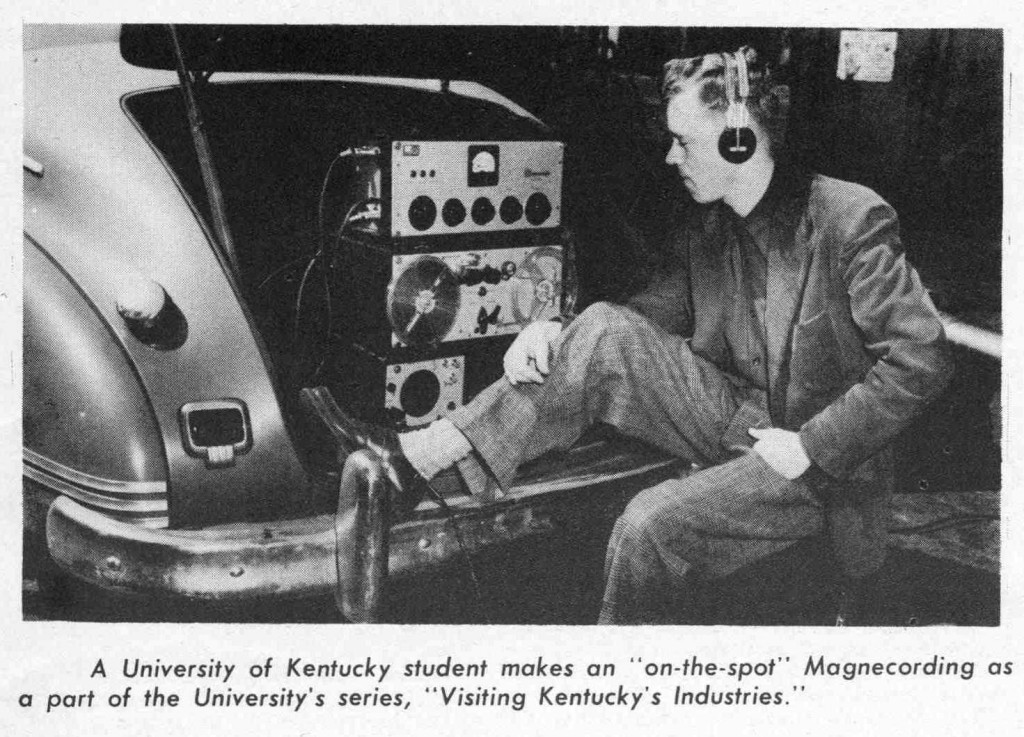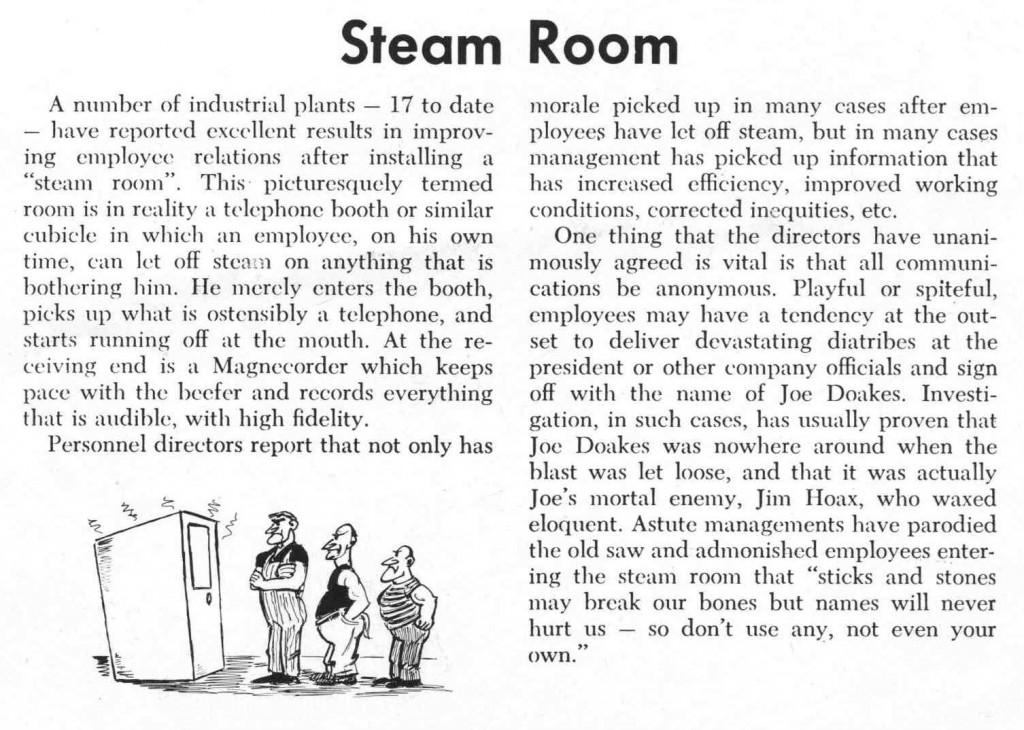 This week we’ll conclude our series of archival material courtesy of Magnecord founding partner John Boyers. John’s son D. graciously scanned every page of every available issue of the company publication “Magnecord INC,” which was published between 1950 and 1954.
This week we’ll conclude our series of archival material courtesy of Magnecord founding partner John Boyers. John’s son D. graciously scanned every page of every available issue of the company publication “Magnecord INC,” which was published between 1950 and 1954.
If anyone out there has any issues that we are missing, please chime in and let’s figure out a way to get them online. Magnecord was a crucial developer of tape-recording and pro-audio hardware whose contributions have been largely forgotten in the modern era. I use a Magnecord PT6 at our studio Gold Coast Recorders to make the occasional ‘old-time’ recording and it’s a testament to the skill of engineers like Mr. Boyers that the machine still works great SIXTY years after it rolled out the Chicago plant.
The ‘Magnecord INC’ publications are fascinating because they reveal the dawn of the high-fidelity audio-recording age. Remember that these (and certain of the AMPEX machines of the era) were portable audio-recorders with 40hz- 15kz frequency response. These facts opened up world of possibility for audio capture. Reading through these old issue of “Magnecord INC” opens the door to a time when the world was first figuring out all of the things that could be done with a portable machine that could capture and playback sound to the near-limits of human hearing ability. Many of the then-novel tape-recording tasks described in these publications may seem mundane; but many are surprising and quite odd applications which never really caught on past a few enthusiastic early-experimenters.
Without further ado, here are the issue from 1950. More to follow tomorrow. Download and enjoy.

2 replies on “Magnecord Historical Archive Material: Part IV”
My first encounter with Magnecord gear was at the Moody Bible Institue in, IIRC, 1950, during a Sunday service. I went with my young lady friend and her family, who were MBI members.
The service was held in a large chamber, with preachers and a choir up on a platform and seating for a few hundred people on the floor.
What interested me far more than the liturgical proceedings was a man sitting with his back against the wall, right near the entrance, wearing earphones. On a table before him was a mixer, exactly like the one on top of the stack in the trunk of the car illustrated above. (Anybody know its model number? I haven’t seen any documentation of it in these pages.)
He was, of course, engineering the remote broadcast for station WMBI.
The experience hooked me on radio broadcasting in general, and remotes in particular.
I later got my hands briefly on a PT-6 in 1958, when my Jr High speech class gave a radio play at our local School System radio station, and I was one of the lead characters. By that time the station had augmented their portable tape machines with an Ampex 600, and had two more Ampices mounted permanently on either side of the RCA BC-1 console.
Boy, the disparity between rewind and fast forward speeds on those -6’s was awesome! I also learned the “quick twist of the left wrist” motion essential to quick treading of those machines.
When I worked at our local commercial station, we had a full-size 10.5″ reel rack mounted Magnecorder called, IIRC, an M600. I haven’t seen any information on it since leaving that station in 1964.
In the meantime, I had done my first year of engineering at IIT. We had a carrier-current station and a hand-me-down Magnecorder from A.R.F. This was another full-size rackmount unit but different from the M600 just mentioned. The M600 had a square boxlike head cover, hammertone grey except for a brushed stainless trim piece on the front. The one at IIT had (my recollection is admittedly hazy) a more shapely black head cover. Both machines were fully solenoid controlled and thus remotable, like more less expensive A-350’s.
Chris,
I really appreciate your kind words and thoughtful treatment given to Dad’s work as a co-founder of Magnecord. As his mental condition fades away, there isn’t much these days that gets his attention or causes him to smile, but when I show him the pages of your site, he brightens at the thought that people still value his efforts of long ago, and although he can’t express it, I’m sure it brings him joy.
Thank you and keep up the good work,
db